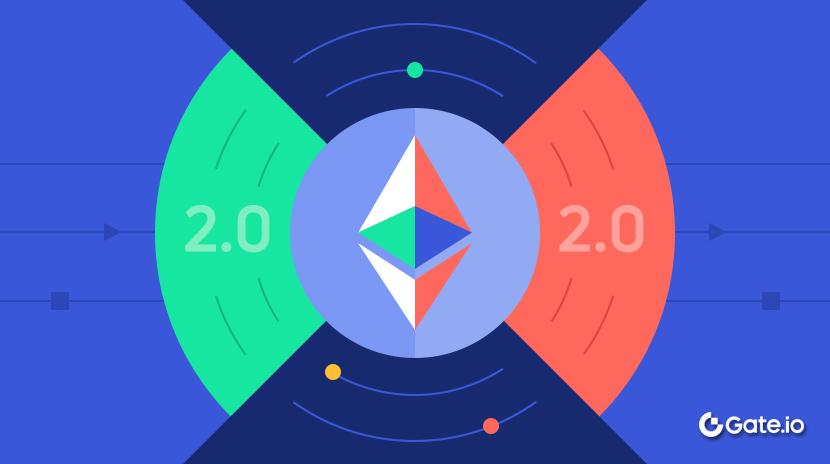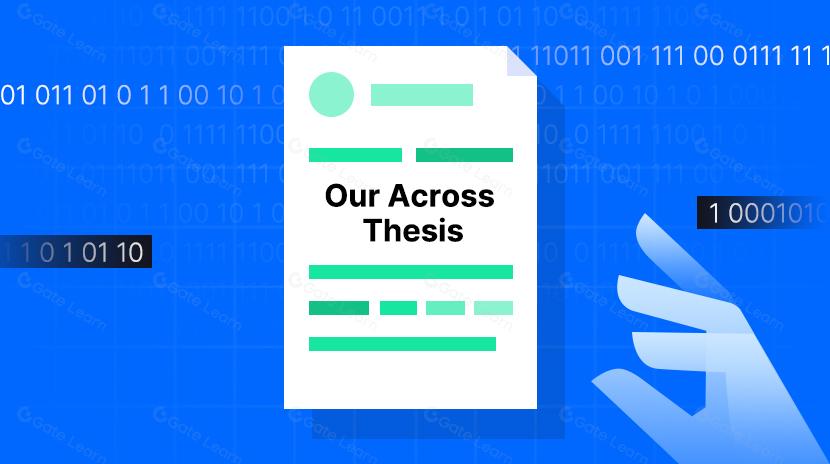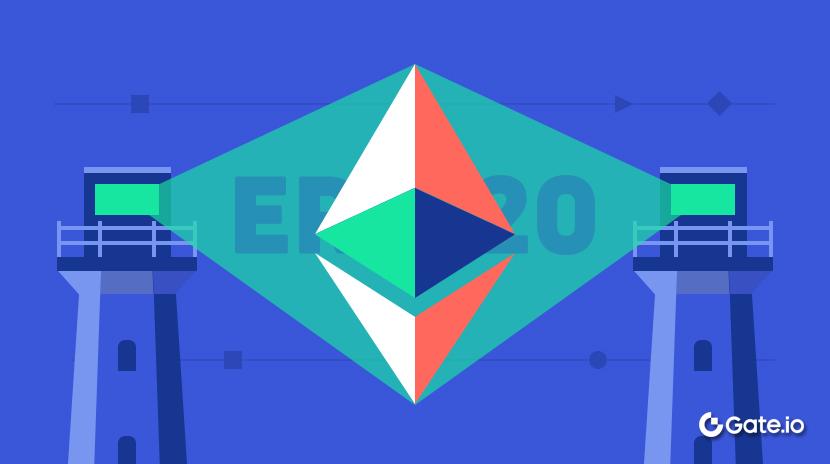Ethereum Argentina Developers Conference: Towards a New Decade of Technology and Applications
Opening Ceremony: From the First Webpage to the Ethereum World Expo
The Ethereum Developer Conference was held in Buenos Aires, Argentina, from November 17 to 22. Over the course of the week, the city hosted more than 40 official events, 75+ project showcases, and hundreds of side events, drawing an anticipated 15,000 attendees.
At the opening ceremony, the host began by referencing Tim Berners-Lee’s creation of the first webpage in 1991, highlighting the internet’s evolution from Web1 to today’s Web3. This year’s event was positioned as the “Ethereum World Expo,” bringing together leading global projects while celebrating the achievements of Argentina’s local Web3 community. Immediately following the ceremony, Ethereum Day launched with key sessions covering the Foundation’s approach to governance, protocol development, privacy, security, institutional adoption, and future roadmaps. Core team members and researchers took turns sharing the latest insights.
Ethereum & Foundation Updates (I): Tomasz Stanczak on a Decade’s Journey and Future Challenges
Tomasz Stanczak, Co-Executive Director of the Ethereum Foundation, emphasized in his keynote that Ethereum’s first decade established essential foundations in consensus, client development, and privacy tooling. Looking ahead, he warned that greater challenges in privacy, decentralization, and user autonomy will demand broader community engagement and deeper collaboration.
Explaining Ethereum’s participant landscape, Tomasz described a diverse ecosystem: local organizers who brought Devcon to Argentina, communities focused on urban experiments and public goods, core protocol developers, engineers who prioritize privacy by default, active L2 teams, interdisciplinary contributors from academia to finance, and volunteers supporting multi-language localization for the official Ethereum website. He underscored that these dedicated builders are the backbone of Ethereum’s protocol security and network health.
Tomasz highlighted Ethereum’s track record of zero downtime across numerous upgrades, attributing this achievement to relentless contributions from across the ecosystem. He framed the present as a moment for both reflection on milestones and reassessment of future priorities. He urged more developers and users to engage directly—whether by building applications or using ETH in daily life—to ensure Ethereum’s utility and governance remain grounded in real-world needs.
In the Q&A, he noted that if, a decade from now, builders trace their journey back to this conference, it would mark the event’s greatest impact. He shared observations from Argentina: under high inflation and capital controls, crypto assets provide tangible benefits, yet the path to true decentralization still requires advancements in privacy, security, and usability. Local efforts in these areas are worth watching. His advice to newcomers: strengthen your “connective capacity”—proactive cross-team and cross-community communication often yields outsized progress.
Ethereum & Foundation Updates (II): Hsiao-Wei Wang on the Foundation’s Three Core Capabilities
Hsiao-Wei Wang, Co-Executive Director of the Ethereum Foundation, used the “staircase” metaphor to capture Ethereum’s first decade: “This is a staircase that the global community continues to build higher, with no set endpoint, offering a path for everyone to ascend at their own pace. Every new step laid by a builder becomes a starting point for those who follow.”
She pointed out that Ethereum has evolved beyond a blockchain—it now serves as foundational infrastructure for new forms of assets, identity, culture, and collaboration. Ethereum is not controlled by any single team. Every participant, including those in the L2 space, represents a rung on the ladder. The Foundation’s role is not to reach the top, but to stabilize the ladder and help shape the next decade collectively.
Reviewing her and Tomasz’s time as Co-Executive Directors, she defined the Foundation’s new era by three capabilities. First, reliability: Ethereum’s zero downtime through major upgrades is built on steadfast engineering standards, block by block. Second, adaptability: the Foundation doesn’t presume to have every answer; instead, it adjusts direction in response to community needs and external changes, keeping the protocol aligned and resilient as societal uses shift. Third, genuine governance responsibility: the Foundation’s job is to maintain a stable environment for the ecosystem—not to dictate Ethereum’s path, but to let direction emerge organically in an open context.
Hsiao-Wei stressed that Ethereum’s staircase is open to all—researchers, client and app developers, investors, end users, scientists, scholars, students, and local community leaders. The Foundation’s mission is to support early, underappreciated efforts—like client diversity and cutting-edge research—so they become critical stepping stones in the future.
She also cautioned that decentralization, neutrality, and resilience under pressure are not automatic. They must be safeguarded by transparent, principled, and uncompromising design. Undermining these values threatens the structural integrity of the entire Ethereum ecosystem.
Scaling L1, Scaling Blobs, Enhancing User Experience: Protocol Update Brief
Ethereum protocol team members Ansgar Dietrichs and Barnabé Monnot presented a progress update on the Foundation’s protocol R&D team after its restructuring this year. Their report focused on three areas: scaling L1, scaling data blobs, and improving user experience.
For L1 scaling, Ansgar explained that Ethereum’s block gas limit was long held at 30 million, with engineering resources focused on key upgrades such as the Merge and account abstraction. Now, as L1 takes on a defined settlement layer role, the team is boosting throughput by optimizing clients and refining protocols—without relying on expensive hardware.
Client improvements have already raised the gas limit to 45 million this year, with plans to increase it to 60 million in the next hard fork. The team is also advancing proposals like opcode repricing and access lists to drive performance. Ansgar revealed that the ZK-EVM prototype now achieves real-time proofs in under 12 seconds, paving the way for lower computational requirements for nodes.
Discussing blob scaling, he illustrated the importance of EIP-4844 for rollup data availability. Proto-danksharding introduces data blobs and a commitment system, letting rollups post data at lower cost. The next hard fork will bring data availability sampling proofs, setting the stage for greater blob capacity ahead.
Barnabé summarized progress on user experience, including cross-chain interoperability with the Interop project, the Trillion-Dollar Security Initiative, and the privacy-focused wallet project Kohaku. Interop was the session’s highlight. Their aim: deliver a “seamless, secure, and permissionless” multi-chain experience for users and institutions. Using an open intent framework and modular cross-chain stack, users declare their intent and the back end automates cross-chain swaps—no manual asset bridging required. The team is also exploring ways to accelerate finality for more efficient on- and off-chain interactions.
Laying the Groundwork for Trillion-Dollar Assets
Fredrik Svantes, Ethereum Foundation’s Head of Protocol Security, and Mehdi Zerouali, Co-Founder of Sigma Prime, highlighted during the “Trillion-Dollar Security Initiative” that Ethereum is transitioning from supporting millions of users and tens of billions in assets to underpinning public infrastructure capable of handling trillions. Security capabilities must scale in step with the ecosystem’s potential growth and complexity.
The initiative now targets three areas. First, endpoint security and wallet experience: the focus is on solving blind signing so wallets display transaction outcomes clearly, empowering users to understand what they’re authorizing. Second, frontend and infrastructure security: the Fiber Frontend project is developing verifiable, interchangeable frontend solutions to reduce risks of fund theft from compromised sites. Third, transparency and communication: the Foundation’s digital studio is building a public website to show project status and outstanding tasks, making the security roadmap clear and inviting community contribution.
Mehdi stressed that Trillion-Dollar Security is an open repository for the entire ecosystem; every solution must be open source, auditable, and community-owned. He emphasized that blind signing represents a significant risk, and security should be a default feature, not an additional burden on users. In the Q&A, both noted that as AI accelerates code generation, the need for security research and architectural audits will only rise. The Ethereum ecosystem is already funding post-quantum cryptography R&D and building prototypes, making it one of the best-prepared major blockchains for quantum threats.
On ZK-EVM, they compared its current security to Solidity in 2016—still nascent and in need of systemic cultivation of new security engineers and collaborative maturation. Feedback from traditional institutions shows many now view Ethereum as the “least concerning for underlying security” among major chains, influencing their deployment preferences.
Institutions & Decentralization: Danny Ryan on Wall Street and Ethereum
Danny Ryan, Core Researcher at the Ethereum Foundation, shared in “Institutions Decentralization” that after years focused on decentralization protocols, his recent interactions with banks and large institutions have revealed that traditional financial infrastructure is far less efficient than commonly assumed. Asset managers juggle multiple incompatible software systems, rely on faxes, and perform manual reconciliations, with settlement still at T+1 or T+2 speeds.
In this environment, institutions are obsessed with counterparty risk, scrutinizing everyone from trading partners to infrastructure providers. Here, Ethereum’s credible neutrality and decentralized design—multi-client support and thousands of nodes secured by cryptoeconomics—stand out as competitive advantages, making it a strong contender for trillion-dollar asset infrastructure.
Danny emphasized that for institutions, privacy is a minimum requirement—not a luxury. If privacy doesn’t meet current standards, many partnerships won’t even start. Building usable privacy environments for institutions will push Ethereum to invest further in zero-knowledge proofs and related tech, which benefit both scalability and privacy. With global regulatory clarity improving, stablecoins and liquidity network effects are set for renewed growth, and Ethereum must secure a pivotal role.
On architecture, he highlighted Ethereum’s modular design and L2 ecosystem as highly attractive for institutions—they can launch purpose-built L2s with partners while leveraging Ethereum’s security and liquidity.
He argued that the true goal is not simply “tokenizing assets,” but creating on-chain systems so compelling that real-world assets naturally migrate. The real metric for success is measured in trillions. On-chain RWA is still in the tens of billions—just a starting point compared to global investable assets.
During Q&A, he addressed a common misconception: that decentralization means “unregulatable” or “totally public.” With programmable access controls and privacy tech, it’s possible to reduce intermediary risk while maintaining compliance.
He urged builders to form “translation alliances” with traditional finance professionals, aligning language and thinking. On the risk of Ethereum being “captured by institutions,” he acknowledged it exists, but the key is preserving Ethereum’s globally distributed protocol as the foundation for large-scale asset migration.
Ethereum (Roadmap) in 30 Minutes: Vitalik’s Principles and Technical Roadmap
Ethereum founder Vitalik Buterin, in “Ethereum (Roadmap) in 30min,” opened with the FTX collapse, contrasting the “Don’t be evil” mantra of centralized entities with Ethereum’s “Can’t be evil” design. He described Ethereum as a “global, open, censorship-resistant application platform,” emphasizing programmability: anyone can deploy smart contracts, not just execute preset transactions.
He categorized blockchain’s strengths: payments and financial use cases, DAOs, decentralized identity and ENS, voting, censorship-resistant publishing, and proving existence or scarcity at a point in time. Limitations: insufficient privacy, inability to handle extremely high throughput or low-latency computations, and lack of direct access to real-world data.
On the technical roadmap, Vitalik described 2025–2026 as Ethereum’s “scaling arc.” This year’s gas limit has already increased by about 50%, with the network moving toward 60 million through community votes. Upcoming upgrades will further boost throughput—builder/proposer separation and block-level access lists—without raising hardware requirements.
Vitalik is especially optimistic about ZK-EVM, which lets nodes verify proofs instead of re-executing all transactions, dramatically cutting sync and computation costs and enabling full nodes on laptops or even phones. The longer-term “Lean Ethereum” vision aims to incrementally adopt near-optimal components: zero-knowledge-friendly VMs and hash functions, post-quantum cryptography, formal verification, and better data availability. On the user side: light clients, account abstraction, hardware and social recovery wallets—all working to enhance privacy and security.
In Q&A, Vitalik summed up Ethereum’s relationship to Wall Street as “Wall Street participants are users, and Ethereum’s goal is to support all users,” emphasizing the need to protect credible neutrality at the base layer. On bringing Ethereum to the real world, he cited the resurgence of everyday payments—Buenos Aires now has merchants accepting ETH and stablecoins—and encouraged open, verifiable tech adoption in operating systems, communications, and governance. When asked about the most essential personal skill, he encouraged community members to become generalists: install a wallet, make an ETH payment, join a DAO, write a simple contract, and understand the basics of the protocol.
Statement:
- This article is republished from [Foresight News]. All copyrights belong to the original author [Sanqing, Foresight News]. For any concerns about republication, please contact the Gate Learn team. We will address them promptly according to our procedures.
- Disclaimer: The views and opinions expressed are solely those of the author and do not constitute investment advice.
- Other language versions are translated by the Gate Learn team. Do not reproduce, distribute, or plagiarize this translated article without proper attribution to Gate.
Related Articles

What Is Ethereum 2.0? Understanding The Merge

Reflections on Ethereum Governance Following the 3074 Saga

What is Neiro? All You Need to Know About NEIROETH in 2025

Our Across Thesis

An Introduction to ERC-20 Tokens
